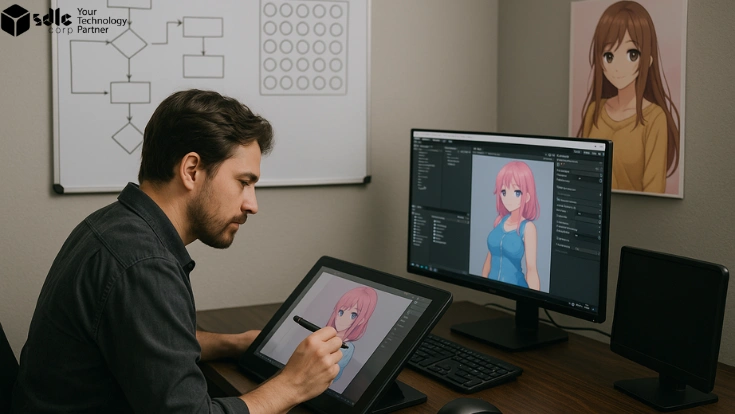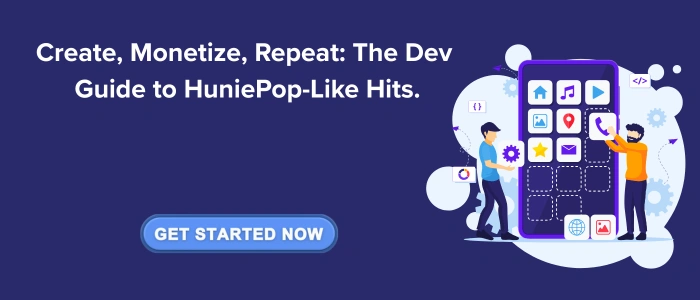Creating a game like HuniePop is both a technical and creative challenge. This iconic title is known for blending match-3 puzzle mechanics with dating simulation, wrapped in a charming anime-style aesthetic. Whether you want to emulate its gameplay, narrative structure, or hybrid genre appeal, this guide will walk you through the major steps and considerations to help you develop your own unique version of such a game.
Understanding HuniePop: What Makes It Stand Out?
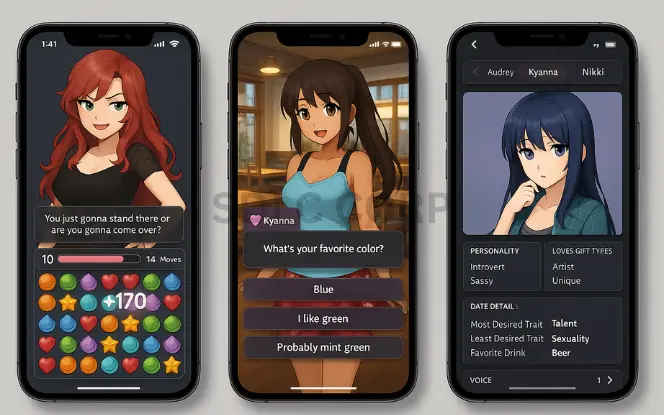
Before diving into development, it’s crucial to understand what made HuniePop successful:
- Genre Fusion: The game uniquely combines a dating simulator with a match-3 puzzle mechanic.
- Character-Driven Narrative: Each character has a distinct personality, backstory, and set of preferences.
- Visual Appeal: Anime-style 2D graphics appeal to a wide range of players.
- Adult Themes: It includes mature content, which requires special consideration depending on your audience.
- Replayability: Players are encouraged to replay interactions with different characters.
Also Read: Develop a game like Free Fire
Featured Elements of a HuniePop-Inspired Game
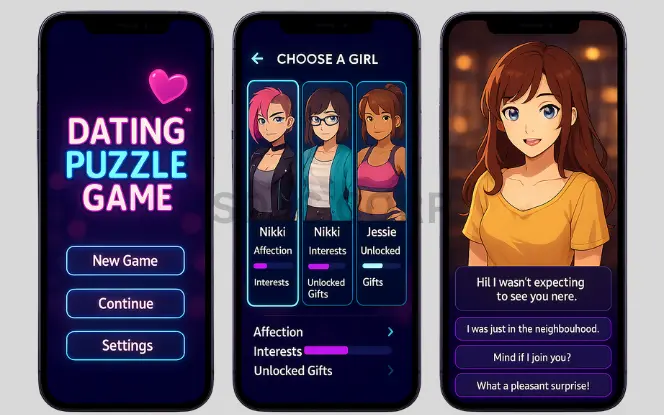
To create a standout experience, consider including the following features:
- Hybrid Gameplay: Seamless integration of puzzle and narrative segments
- Multiple Love Interests: Each with unique story arcs and personalities
- Dynamic Dialogue Trees: Offering players meaningful choices and consequences
- Inventory and Gift System: Affects relationship progress
- Progressive Unlockables: New outfits, scenes, or dialogue based on in-game performance
- Achievements and Rewards: Encourage completionism and exploration
- Multiplatform Support: Consider PC, mobile, and web releases
Step 1: Conceptualization and Planning
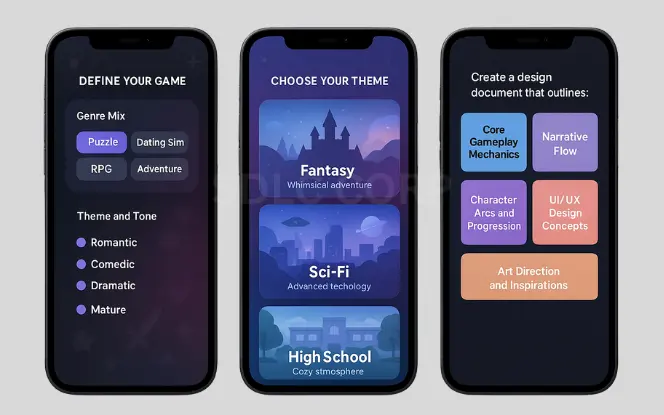
Start with a clear vision of your game:
- Define Your Genre Mix: Will you stick with puzzle and dating sim elements, or mix it with other genres like RPG or adventure?
- Choose Your Theme and Tone: Decide on your setting (e.g., fantasy, high school, sci-fi) and whether it will be comedic, romantic, dramatic, or mature.
- Character Development: Sketch out your characters. Create detailed bios including names, backgrounds, interests, and dialogue style.
Create a design document that outlines:
- Core gameplay mechanics
- Narrative flow
- Character arcs and progression
- UI/UX design concepts
- Art direction and inspirations
Explore: How to Develop a Game like Risk
Step 2: Choosing the Right Game Engine

Several game engines are ideal for developing a hybrid game like HuniePop:
1. Unity
Excellent for match-3 puzzle mechanics
Supports 2D and UI-heavy games
Large community and plugins
2. Ren’Py
Tailored for visual novels and dating sims
Less suited for advanced puzzles
Easy scripting language
3. Godot
Lightweight and free
Good for 2D game development
Visual scripting for beginners
For a game that blends puzzle gameplay and storytelling, Unity might be the most flexible option, especially if you want to build your own match-3 engine.
Step 3: Designing the Match-3 Puzzle System
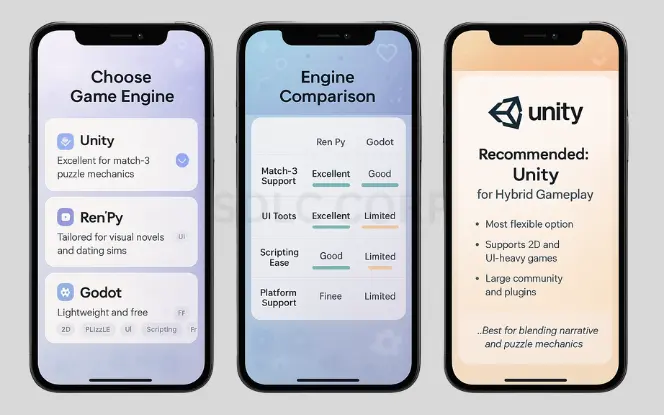
The puzzle aspect of your game should be both challenging and engaging. Consider the following components:
- Grid Design: Typically, a 7×7 or 8×8 grid works well
- Piece Types: Define different token types, each potentially linked to a character trait or stat
- Special Moves: Create power-ups or combos
- Scoring System: Connect scoring to in-game actions, like increasing affection levels
- Turn Mechanics: Decide if it’s turn-based or time-based
Use Unity’s 2D physics and sprite systems to implement match detection, cascading effects, and animations.
Learn More: Develop a game like the Snake Game
Step 4: Creating the Dating Sim Engine
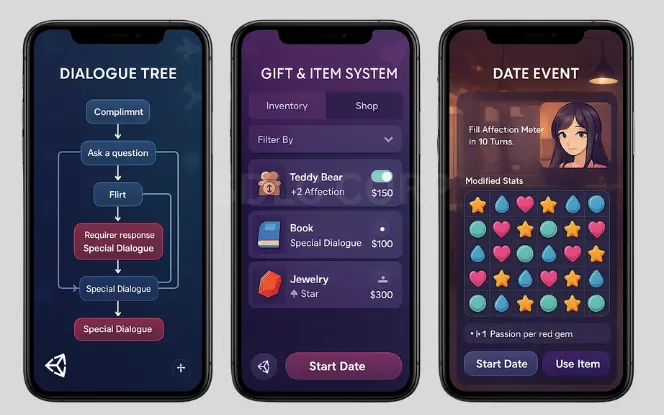
This is where your narrative skills come into play:
- Dialogue Trees: Use branching dialogue paths based on player choices
- Stat-Based Responses: Character reactions can vary based on player stats or prior decisions
- Gift and Item Systems: Let players purchase or unlock items that influence outcomes
- Date Events: Incorporate scenarios where puzzle segments are integrated as “date challenges.”
Unity’s ScriptableObjects can help manage large datasets for characters, dialogue, and events.
Step 5: Character Art and Animation
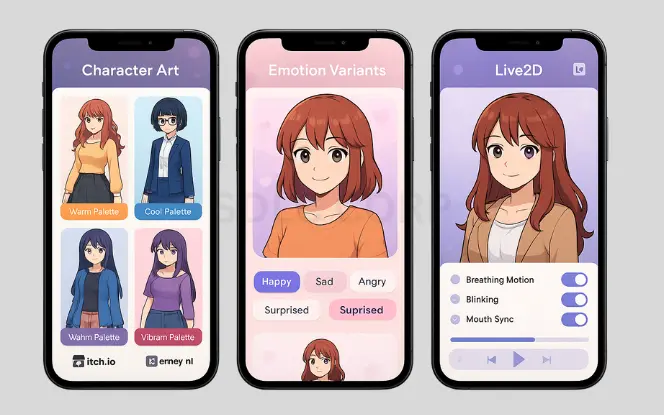
Anime-style characters are central to HuniePop’s appeal. Consider hiring an illustrator or using assets from platforms like:
- Itch.io
- Kenney.nl
- OpenGameArt
Tips for art consistency:
- Use a limited color palette per character
- Create emotion variants (happy, sad, angry, surprised)
- Design idle and speaking animations
Tools like Live2D can bring static images to life with subtle motion.
Step 6: User Interface Design with Custom Themes
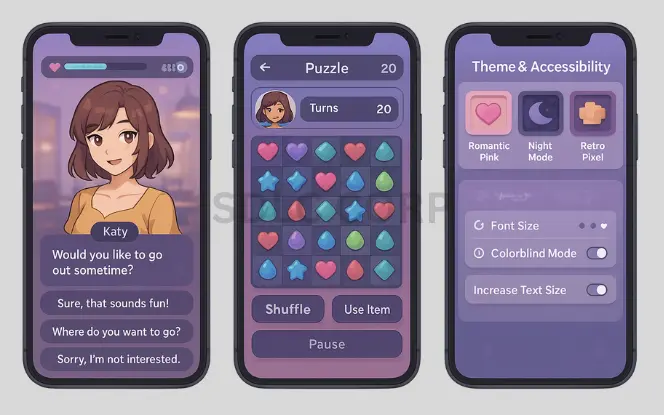
UI is critical in dating sims and puzzle games:
- Conversation Screens: Display character portraits, dialogue boxes, and player choices
- Puzzle Interface: Clear grid layout, intuitive controls, responsive animations
- Menus: Include stats, inventory, gallery, and save/load features
- Custom Themes: Allow players to switch themes/skins for UI or characters
- Accessibility Options: Font resizing, colorblind modes, and simplified controls enhance usability
Use wireframes and user testing to refine the design.
Step 7: Audio and Music
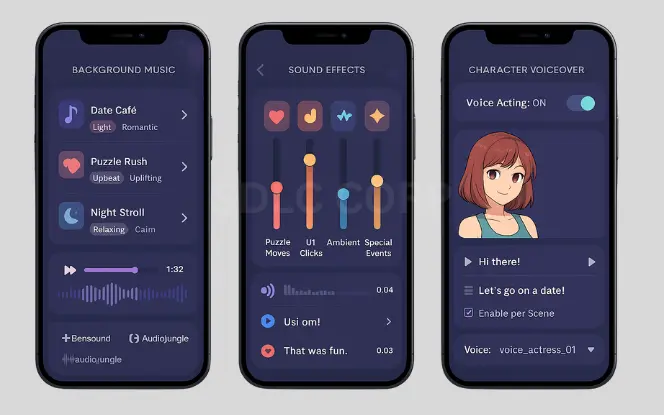
Audio adds emotional depth:
- Background Music: Light and mood-appropriate for both dating and puzzle scenes
- Character Voiceovers: Optional, but adds personality
- Sound Effects: For puzzle moves, UI clicks, and special events
Sources:
- FreeSound.org
- Bensound
- AudioJungle
Also Read: How to Develop a Game like Minecraft
Step 8: Monetization Strategy (Optional)
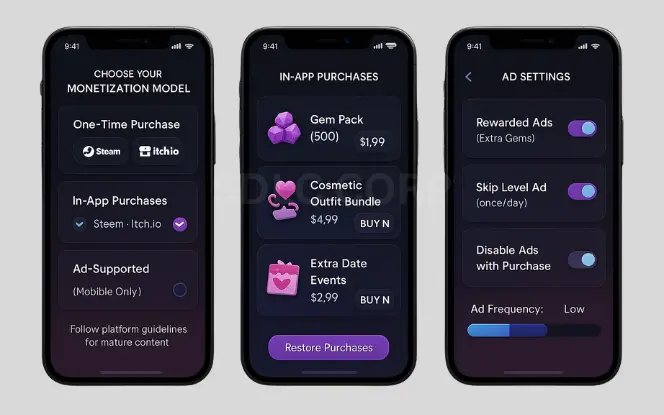
If you plan to monetize your game:
- One-Time Purchase: Sell it via Steam, Itch.io, or other platforms
- In-App Purchases: For extra content or cosmetic items
- Ads: Less common in narrative games, but possible in mobile versions
Be mindful of platform guidelines, especially for adult content.
Step 9: Costing Break-up for Development
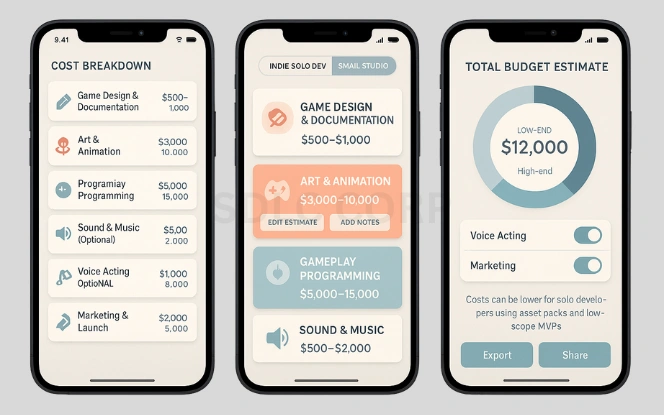
Here’s a rough breakdown of potential costs:
- Game Design & Documentation: $500 – $1,000
- Art & Animation: $3,000 – $10,000 (depending on style and number of assets)
- Programming: $5,000 – $15,000 (engine integration, gameplay logic, UI)
- Sound & Music: $500 – $2,000
- Voice Acting (Optional): $1,000 – $5,000
- Testing & QA: $1,000 – $3,000
- Marketing & Launch: $2,000 – $5,000
Total Estimated Budget: $12,000 – $40,000 (can be lower for indie solo devs)
Step 10: Testing and Feedback
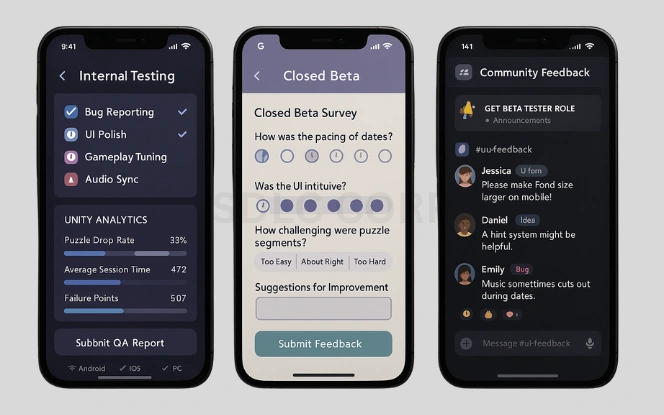
Before releasing:
- Internal Testing: Catch bugs and polish gameplay
- Closed Beta: Gather feedback on pacing, difficulty, and UI
- Localization Testing: If you plan to release in multiple languages
Tools:
- Unity Analytics
- Google Forms for beta feedback
- Discord for community feedback
Learn More: How Do Free-To-Play (F2P) Games Make Money in 2025
Step 11: Publishing and Marketing
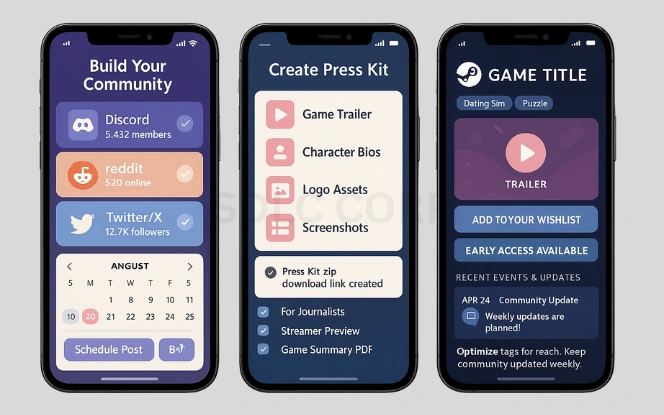
Marketing is essential for visibility:
- Build a Community: Use Discord, Reddit, and Twitter/X
- Press Kits: Include screenshots, bios, and trailers
- Content Creators: Partner with streamers or YouTubers
- Steam Page: Optimize with tags, trailers, and community updates
Consider early access to build a loyal fanbase while you refine your game.
Conclusion: Crafting Your Own HuniePop-Inspired Game
Creating a game like HuniePop involves much more than copying its mechanics. It’s about understanding the appeal of hybrid genres and crafting a unique experience that blends engaging puzzles with compelling storytelling. With careful planning, the right tools, and creative vision, you can build a game that captivates players just as HuniePop did.
Whether you lean into romance, comedy, or something entirely different, let your imagination guide the journey. Good luck!
Ready to turn your game idea into reality? SDLC CORP specializes in game development and can help you bring your vision to life with professional-grade design, development, and deployment services.
FAQ's
What Tools Do I Need to Create a Game Like Huniepop?
You’ll need a game engine like Unity (recommended for puzzle mechanics), a design tool for UI/UX, character illustration software (e.g., Photoshop or Clip Studio Paint), and audio editing tools. If you focus more on visual novel elements, Ren’Py could be an alternative.
Do I Need to Be a Programmer to Build Such a Game?
While programming knowledge helps, you can use visual scripting tools in engines like Unity and Godot. Alternatively, you can collaborate with developers or hire freelancers to handle complex coding tasks.
How Much Does It Cost to Develop a Game Like Huniepop?
Costs can range from $12,000 to $40,000, depending on art quality, content depth, platform scope, and whether you hire professionals or do it independently.
Can I Include Adult Content in My Game?
Yes, but you must follow the guidelines of distribution platforms like Steam or Itch.io. You’ll also need to age-gate your game appropriately and check regional content restrictions.
How Long Does It Take to Develop a Game Like This?
Development time varies, but a full-featured HuniePop-style game might take 6 to 12 months with a small team. Solo developers may need longer, depending on their skill set.
What Platforms Can I Release the Game on?
Common platforms include PC (Windows/Mac), Steam, Itch.io, and mobile (iOS/Android). Choose platforms based on your audience and content rating.

